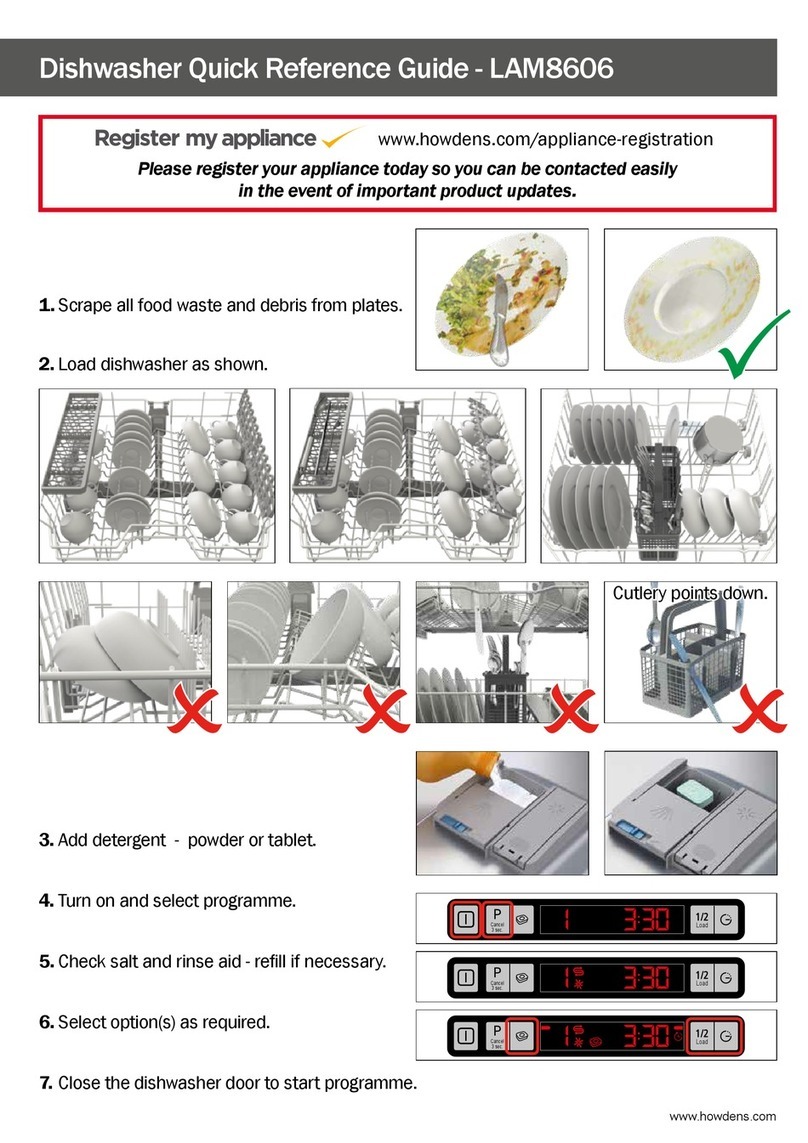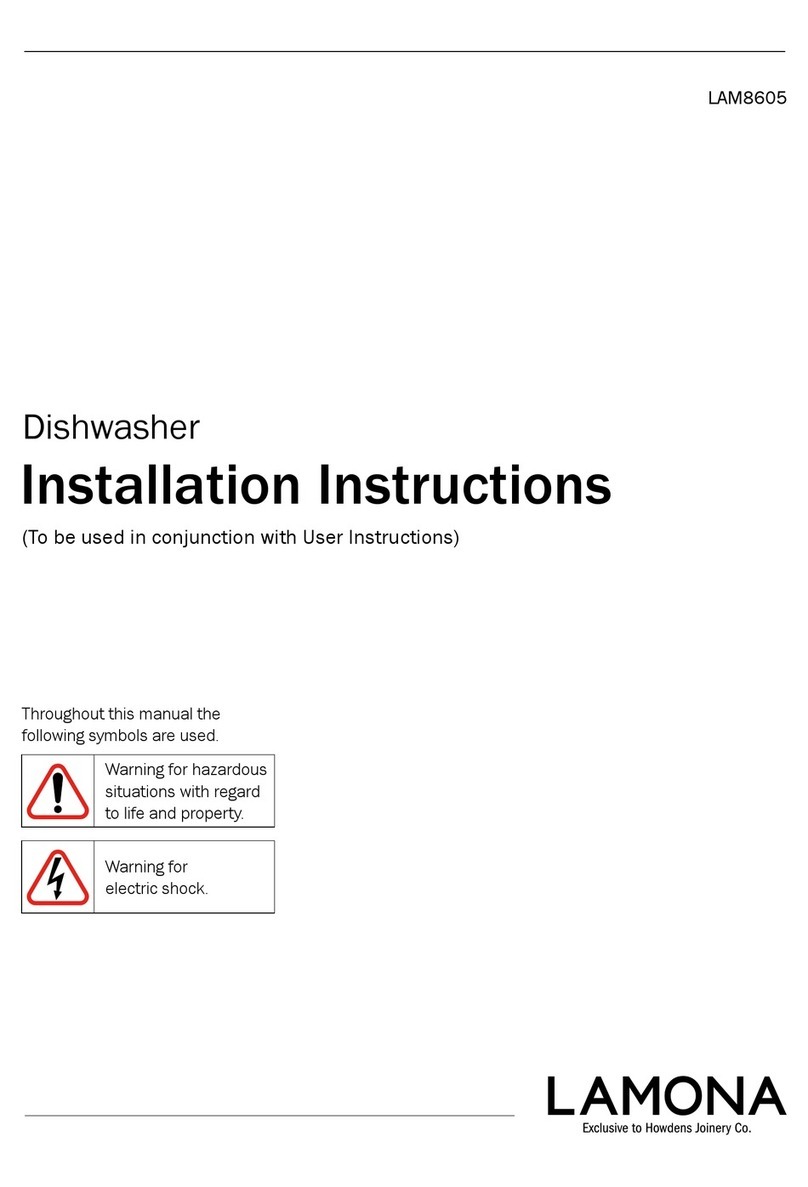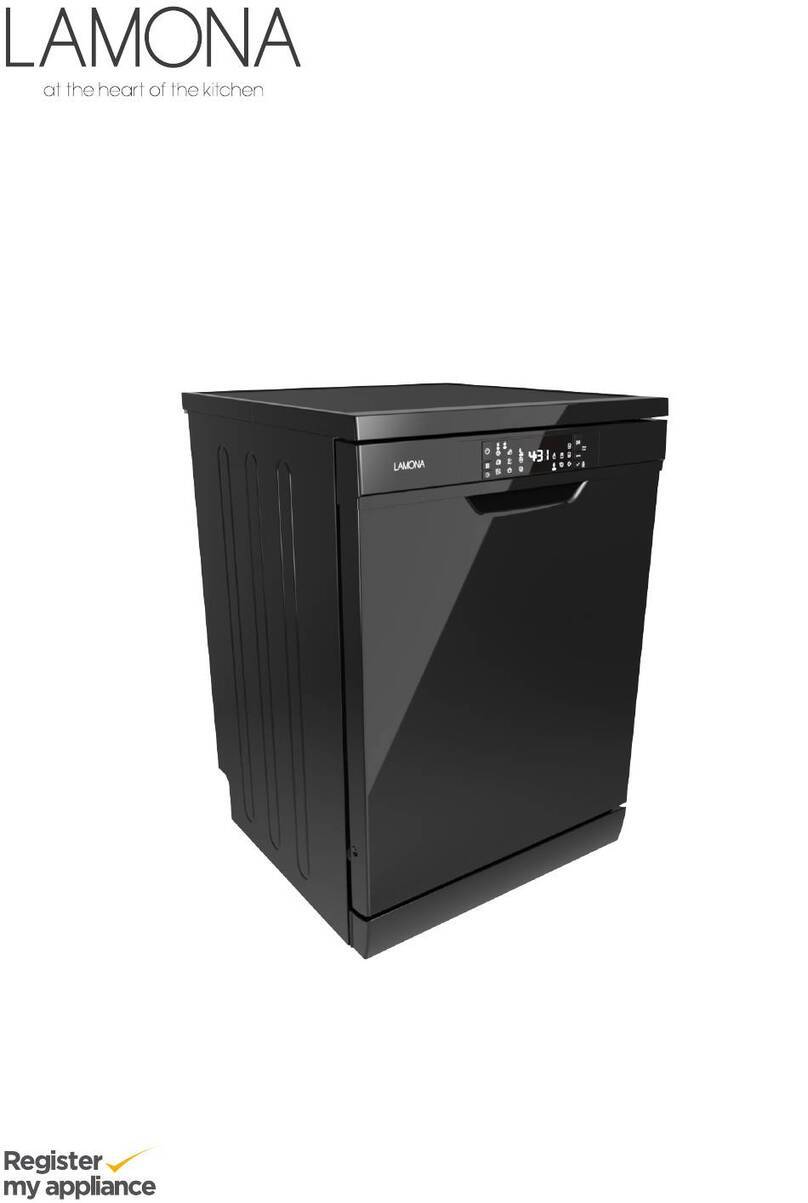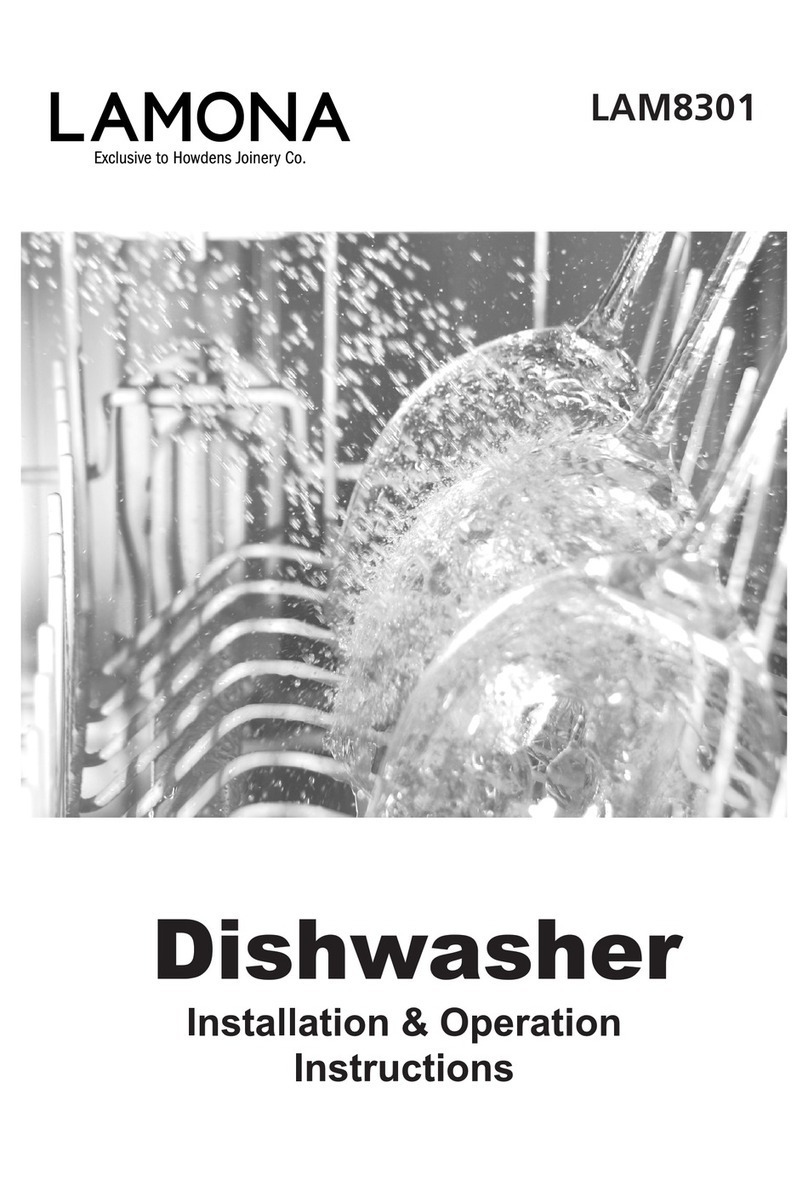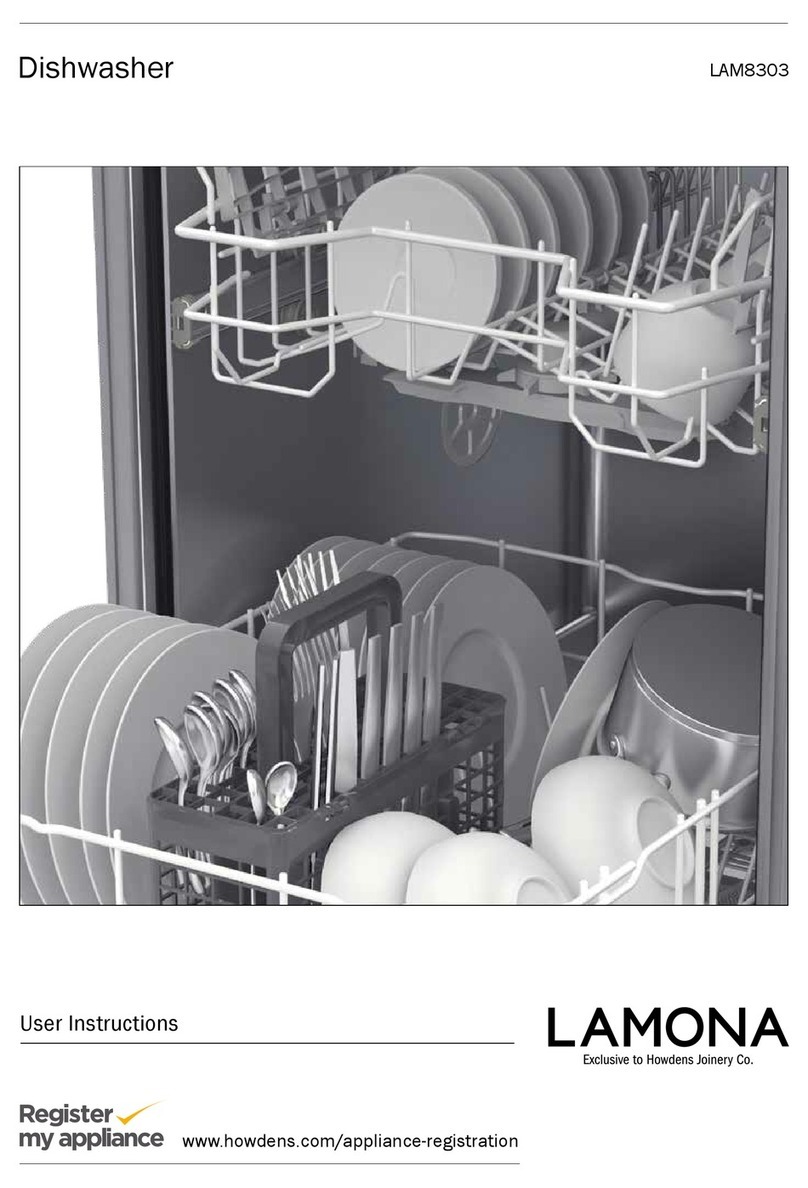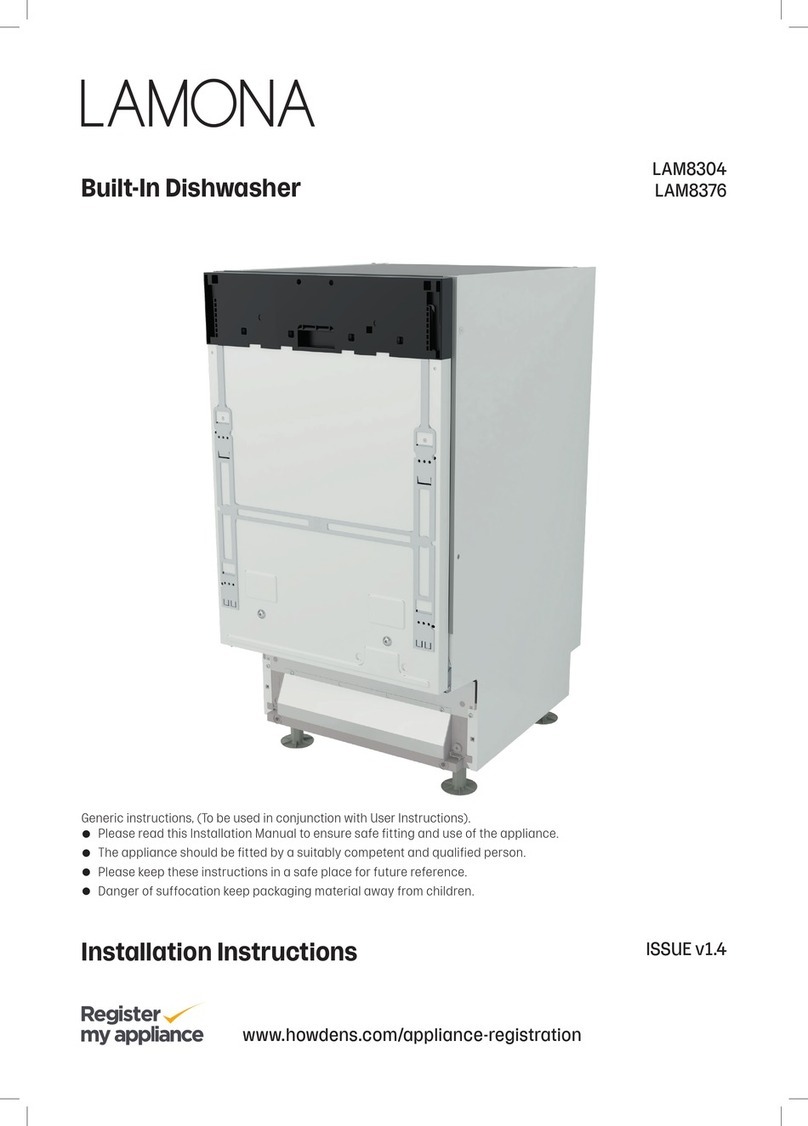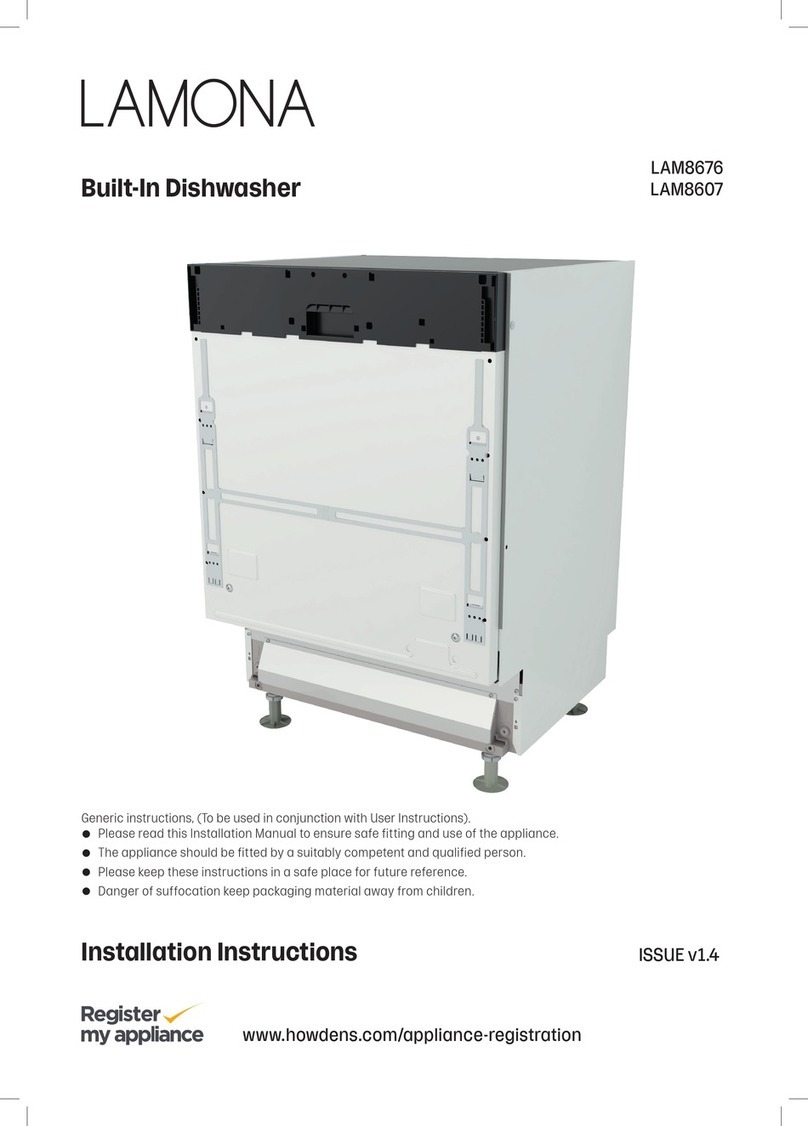
2GB
1Warning and safety information
Electrical Safety
The dishwasher should only be
operated on the voltage speci¿ed. For
electrical safety, only earthed plugs
and sockets should be used. Always
use the fused plug provided with the
appliance. The user is responsible
for meeting these basic safety
requirements. The life of your machine
and your safety depend on you using
an electrical installation compliant to
standards.
Do not use an extension cable.
When disconnecting your machine
from the mains supply, always pull from
the plug. Never pull the cord itself.
Children’s Safety
Never allow your children to play with
your dishwasher.
Dishwasher detergents contain irritants
and abrasives. These ingredients might
have caustic effects in the eyes, mouth
and throat.
They can be extremely dangerous if
swallowed. Avoid contact with skin
and eyes. Check that the detergent
receptacle is empty after completion of
the wash cycle.
Keep detergents out of children’s
reach and do not put detergent in the
machine until right before you start the
washing programme.
The water in your dishwasher is not
suitable for drinking, for this reason
do not allow your children near your
machine when the front door is open.
Never allow your children to play on
or sit on the front door when the front
door is open.
After unpacking your machine, keep
the packing material out of children’s
reach.
Warning !
Long cutlery, such as ladles and
long knives, etc must be placed
horizontally on top of the full cutlery
basket or on the racks to prevent
accidental injury.
General
This dishwasher has been designed to
clean your dirty dishes at home.
Never use chemical solvents in your
machine; this may lead to explosion
risk.
Never use materials other than
specially produced softening salts in
the salt dispenser of your machine.
Never use materials other than
specially produced detergents and
rinse-aids in the detergent and rinse
aid dispensers of your machine.
Please dispose of the packaging
material and old appliances carefully.
Please ensure old machines do not
become a threat to child safety. It is
known that children lock themselves
in unused machines. To avoid such a
problem it is advised that you cut the
mains cable off and break the door
latch so it does not lock.
